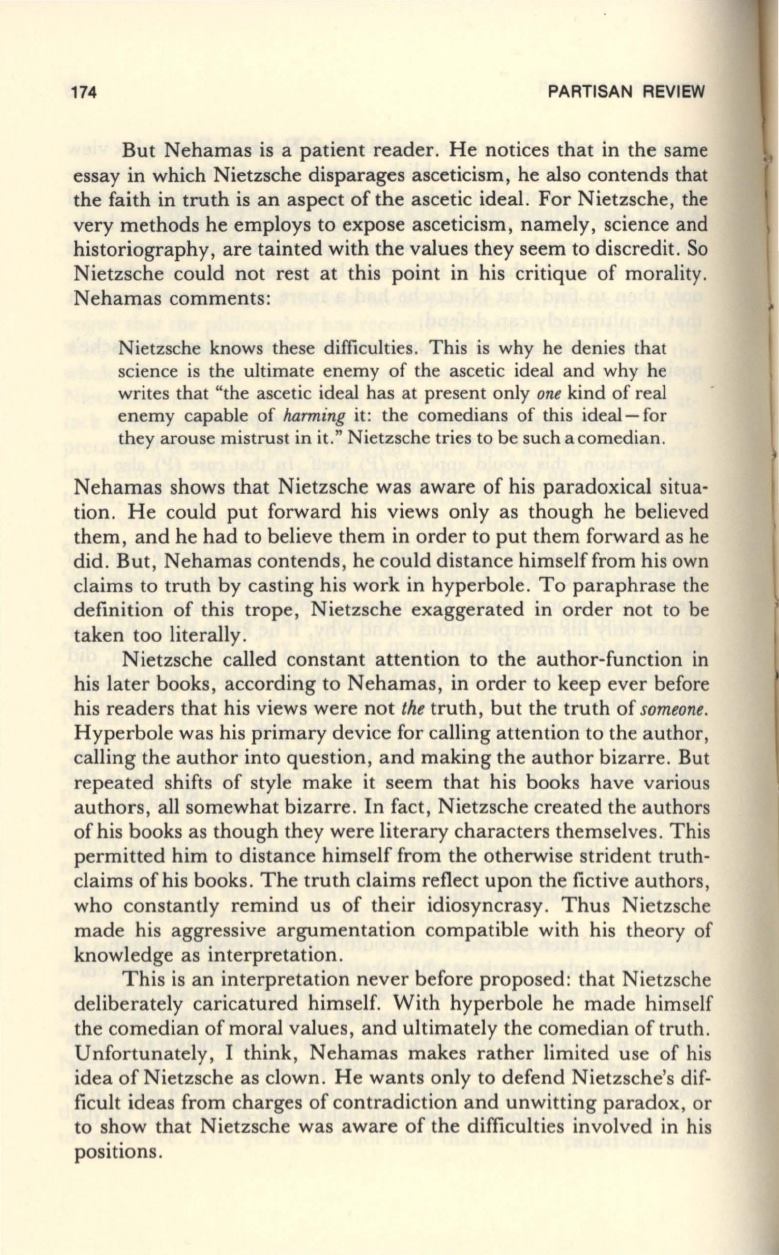
174
PARTISAN REVIEW
But Nehamas is a patient reader. He notices that in the same
essay in which Nietzsche disparages asceticism, he also contends that
the faith
in
truth is an aspect of the ascetic ideal. For Nietzsche, the
very methods he employs to expose asceticism, namely, science and
historiography, are tainted with the values they seem to discredit. So
Nietzsche could not rest at this point in his critique of morality .
Nehamas comments :
Nietzsche knows these difficulties. This is why he denies that
science is the ultimate enemy of the ascetic ideal and why he
writes that "the ascetic ideal has at present only
one
kind of real
enemy capable of
harming
it: the comedians of this ideal- for
they arouse mistrust in it." Nietzsche tries to be such a comedian .
Nehamas shows that Nietzsche was aware of his paradoxical situa–
tion. He could put forward his views only as though he believed
them, and he had to believe them in order to put them forward as he
did. But, Nehamas contends , he could distance himselffrom his own
claims to truth by casting his work in hyperbole . To paraphrase the
definition of this trope , Nietzsche exaggerated in order not to be
taken too literally .
Nietzsche called constant attention to the author-function in
his later books, according to Nehamas, in order to keep ever before
his readers that his views were not
the
truth, but the truth of
someone.
Hyperbole was his primary device for calling attention to the author,
calling the author into question, and making the author bizarre. But
repeated shifts of style make it seem that his books have various
authors, all somewhat bizarre.
In
fact, Nietzsche created the authors
of his books as though they were literary characters themselves . This
permitted him to distance himself from the otherwise strident truth–
claims of his books. The truth claims reflect upon the fictive authors,
who constantly remind us of their idiosyncrasy . Thus Nietzsche
made his aggressive argumentation compatible with his theory of
knowledge as interpretation.
This is an interpretation never before proposed : that Nietzsche
deliberately caricatured himself. With hyperbole he made himself
the comedian of moral values, and ultimately the comedian of truth.
Unfortunately , I think, Nehamas makes rather limited use of his
idea of Nietzsche as clown. He wants only to defend Nietzsche's dif–
ficult ideas from charges of contradiction and unwitting paradox, or
to show that Nietzsche was aware of the difficulties involved in his
positions .


